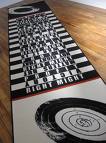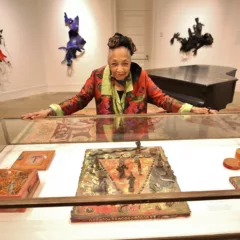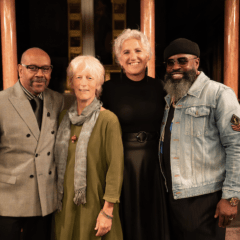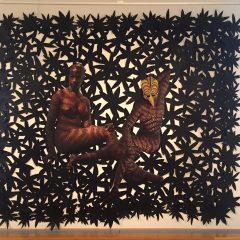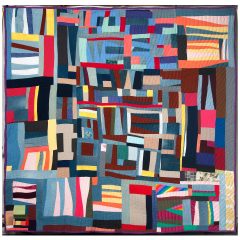Two exhibitions at Swarthmore College feature artists addressing the subject of war. Daniel Heyman curated the exhibition, Printmakers go to War at Swarthmore College’s McCabe Library, in conjunction with Philagrafika (on through April 9, 2010). It includes an international group, Nick Flynn, Damian Cote, Eric Avery, Ehren Tool and Michael Reed, in addition to Heyman, who print onto every possible material: postcards, clay, medical bandages, industrial carpeting, and yes, paper.
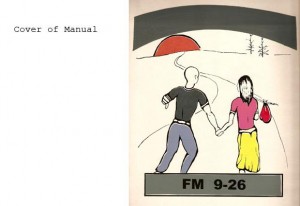
Several of the artists have seen service on the battlefield and much of the work is slyly subersive. Damian Cote’s post cards use the format of souvenir cards but include grisly images of the aftermath of war; he has inserted them in post card stands but doesn’t get to see reactions to them, he said ruefully. He has also produced military manuals where he substituted the imagery and banners that resemble those families make for returning soldiers; only his commemorate the dead.
Michael Reed would like to see his Runners for Corridors of Power, industrial carpeting digitally printed with anti-war images and text, installed in hallways of military and political institutions. Ehren Tool makes ceramic cups, each with individual, war-related imagery; he exhibits them, gives large numbers away, and mails them to government officials and others; he doesn’t mind if they break – damage is one of his subjects.
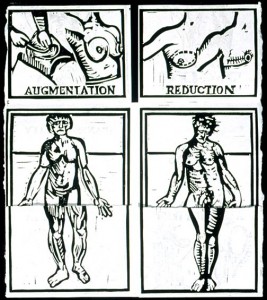
Eric Avery’s artwork builds on his medical practice; Spansexuality is a block-printed book whose split pages allow images to change from man to woman. Nick Flynn collaborated with Heyman, making poetry by redacting torture testimonies, and they jointly created a book.
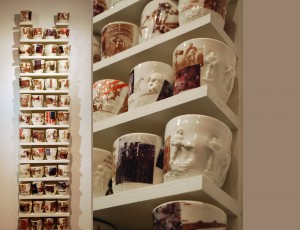
A symposium on Saturday, March 20 included two of the artists and M Ho whose work deals with the front pages of newspapers. When someone from the audience asked whether they thought activist art made any difference, Heyman acknowledged that, from a political stand point, the answer is no. Art can’t. But it can change individuals’ attitudes, and can certainly inspire younger artists to consider such engaged subjects for their art.
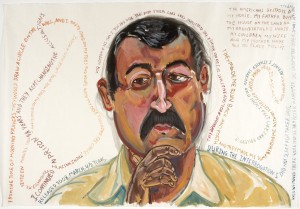
Daniel Heyman’s Bearing Witness at Swarthmore’s List Art Gallery (through April 10, 2010; it then travels to Wesleyan College where it will be shown April 24-May 23) builds on the work he showed at the Philadelphia Print Center in 2007, but the work consists of watercolors of large size (up to 24″ x 34,”; some are framed, others included in an album). A color catalog accompanies the exhibition.
Since 2006 he’s accompanied lawyers working on behalf of victims of torture at Abu Ghraib and elsewhere in Iraq; this has involved trips to interview the men in Amman and Istanbul. They are confrontational in their subject matter, but deeply humane. These are ordinary men who have been horribly wronged through the actions of our government. Heyman’s paintings do not speak for them, but allow their voices to be heard.
The rear room of the exhibition contains another group of witness portraits, these of young fathers he met at a North Philadelphia social services agency. Heyman’s project of giving voice to those from whom we turn away has endless possibilities. That may put a tremendous burden on the artist, but it is his chosen cause, and his gift.


